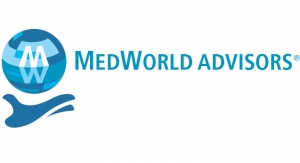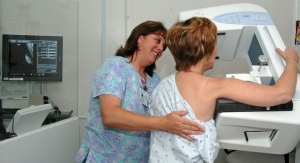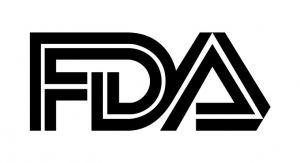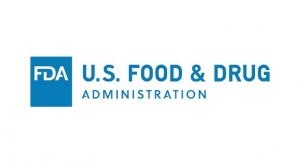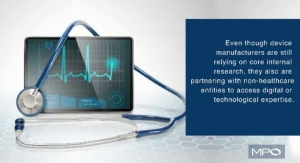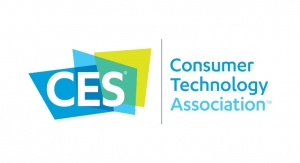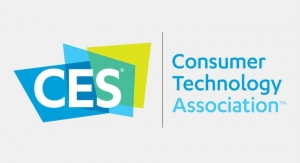Florence Joffroy-Black and Dave Sheppard, MedWorld Advisors05.01.19
Clearly, innovation is one of the keys to success for medtech OEMs and their suppliers. But it’s not the only key—market access is equally as important to long-term growth, as it helps drive immediate sales and generate a return on investment for entrepreneurs. Consequently, companies must embrace and incorporate market access strategies early in the product development cycle to thrive in today’s value-based, payer-dominant healthcare environment.
A successful market access strategy requires an understanding of patient needs, a focus on payer perspectives, and pragmatic, viable solutions. It must also be flexible enough to evolve with market dynamics and varying changes in device pricing, reimbursement, and regulations. This column provides an overview of key markets and the necessary ingredients involved in developing solid market access strategies for workable Class II products (assuming these products have the proper sales and marketing support, of course).
Accordingly, there are two key components to successful market access strategies: regulatory clearance, which authorizes device sales in a specific country or region; and product reimbursement (note: for the purposes of this discussion, reimbursement may also include clinical economic evidence of cost savings for a given solution).
Targeting the U.S. Market
U.S. regulatory clearance is administered by the U.S. Food and Drug Administration (FDA). While it has traditionally been slow and unresponsive, the FDA has morphed into a dynamic organization that is currently updating its authorization guidelines for new technologies and clarifying its positions on existing product classifications. Two areas of innovation requiring specific guidance from the FDA in recent years are wearables and software. The highly flexible nature of product development in these emerging fields has triggered a plethora of questions from manufacturers about device classification and regulation. As a result, the FDA has spent considerable time stating its position on these topics and been increasingly accessible to meet with companies (in advance of a submission) to discuss potential product classification and the clinical evidence necessary for FDA clearance.
Reimbursement has become just as critical as regulatory clearance in accessing the U.S. market. In the past, companies receiving FDA clearance used their commercialization prowess to gain market share in the United States. That approach doesn’t work anymore, though. Technologies that fail to propagate cost savings or reimbursement from insurers will die a quick death in the market.
Thus, to successfully launch new products/technologies in the United States, medtech firms must develop a reimbursement strategy driven by clinical economic evidence. This evidence must be ready at product launch and made clear to potential customers as a well-defined reimbursement plan will help induce adoption of the new innovation.
In developing a reimbursement strategy, companies should take advantage of the FDA’s accessibility and engage in “pre-submission” discussions with the agency. Avoiding the FDA and then submitting a product for clearance is an unnecessary gamble and likely will result in increased time to market, added expenses, and a strained relationship with regulators.
European Variety
Launching a product in the European Union (EU) often makes companies nervous because the EU is actually 28 separate, distinct countries (and cultures). Hence, companies considering introducing their products in Europe should first identify the countries they want to enter and then tailor market access strategies specifically for those areas.
Product launches in Europe require the same basic ingredients as their American counterparts: regulatory clearance (through the CE mark and Medical Device Regulation [MDR] processes) and a solid reimbursement plan.
For years, it was relatively easy to launch a product in Europe—companies simply gained a CE mark, registered in the desired countries, and began marketing their wares. But the new MDR, which has a compliance deadline of May 2020, has made the EU’s authorization system considerably more strenuous and complex than the American method (quite frankly, it’s easier now to start a clinical trial in the United States than in Europe). Adding to that complexity is the fact the MDR and CE mark processes require the use of Notified Bodies for product certification, and these entities are now racing against the clock to conduct audits and accredit both manufacturers and medical devices before the 2020 deadline.
Medtech firms can ensure such complexity doesn’t impact their market access strategies by identifying the proper Notified Body for regulatory clearance. In addition, companies must match their product innovation process to their regulatory plan in order to avoid delays or problems in attaining regulatory clearance for their devices.
Reimbursement is equally as important in most of Europe as it is in America. But with many countries operating their own healthcare systems, it has become necessary for companies to demonstrate the economic cost benefits associated with their product—a task that can sometimes be frustrating and time consuming (particularly with all the different countries at play). Such hassles, however, can be minimized by a prioritization of desired countries for market entry, and a clear demonstration of clinical and economic benefits that will convince customers in those state-run health systems to use the product.
Open Collaboration in Japan
Fortunately, Japan has been modernizing its regulatory approach in recent years to encourage market introduction of new technology. While it is still fairly challenging, the Japan Pharmaceuticals and Medical Devices Agency (PMDA) is nonetheless now more open to a collaborative process to help guide companies through the approval process. Since Japan is driven by a national healthcare system, organizations targeting this market must make PMDA clearance a priority and realize that approval—as in other areas of the world—hinges on proof of a product’s cost benefit. Companies that cannot provide this proof likely will be denied access to this market.
To significantly improve their chances of market penetration, medtech firms should meet with the PMDA early for guidance on the clinical and economic evidence that is acceptable and necessary for regulatory approval.
Constant Changes Complicating Chinese Market Access
China recently has become one of the most difficult markets to access globally. But it wasn’t always that way—historically, it was relatively easy to gain product approval; the difficulty came in navigating the country’s complex distribution channel structure. Now, that dynamic is reversed. Although the channel structure remains a bit complex, numerous Western companies have successfully mastered channel access (either directly or with a local partner) to indicate it’s possible to win there. Nevertheless, attaining product approval through the new NMPA (National Medical Products Administration) has become increasingly more difficult, even for Chinese companies. One of the main factors complicating the approval process is the ever-evolving nature of China’s central regulatory body itself keeps changing (i.e., from State Food and Drug Administration to China Food and Drug Administration to NMPA). Correspondingly, each name change has generated more regulatory complexity and triggered rule changes. It should not be surprising then, that the NMPA is in the process of updating its rules regarding approval for various product classification.
Indeed, market access in China is difficult but not impossible. Companies hoping to conquer this market should ensure their regulatory teams include a specialist who understands the NMPA’s changing nature and the rules associated with product approvals. With any luck, those rules won’t change before the product launches.
Reimbursement, like regulatory clearance, is also very complex in China because—for the most part— it is not handled at a national level. While various products receive classifications at a country level, the reimbursements are often decided at a regional level. This scenario can make it lucrative to launch a product in one region of China and highly unprofitable to enter another region of the country.
Companies looking to break into the Chinese market should ensure their market development teams assess the various reimbursement rates for specific products within each region of the Middle Kingdom and then begin prioritizing the areas best suited for an initial product launch.
There obviously are more global markets than those outlined in this column. But companies that successfully sell products in these countries will be well on their way to global market leadership for their technological solutions. And it all begins with a sound market access strategy.
Florence Joffroy-Black, CM&AA, is a longtime marketing and M&A expert with significant experience in the medical technology industry, including working for multi-national corporations based in the United States, Germany, and Israel. She can be reached at florencejblack@medworldadvisors.com.
Dave Sheppard, CM&AA, is a former medical technology Fortune 500 executive and is now a managing director at MedWorld Advisors. He can be reached at davesheppard@medworldadvisors.com.
A successful market access strategy requires an understanding of patient needs, a focus on payer perspectives, and pragmatic, viable solutions. It must also be flexible enough to evolve with market dynamics and varying changes in device pricing, reimbursement, and regulations. This column provides an overview of key markets and the necessary ingredients involved in developing solid market access strategies for workable Class II products (assuming these products have the proper sales and marketing support, of course).
Accordingly, there are two key components to successful market access strategies: regulatory clearance, which authorizes device sales in a specific country or region; and product reimbursement (note: for the purposes of this discussion, reimbursement may also include clinical economic evidence of cost savings for a given solution).
Targeting the U.S. Market
U.S. regulatory clearance is administered by the U.S. Food and Drug Administration (FDA). While it has traditionally been slow and unresponsive, the FDA has morphed into a dynamic organization that is currently updating its authorization guidelines for new technologies and clarifying its positions on existing product classifications. Two areas of innovation requiring specific guidance from the FDA in recent years are wearables and software. The highly flexible nature of product development in these emerging fields has triggered a plethora of questions from manufacturers about device classification and regulation. As a result, the FDA has spent considerable time stating its position on these topics and been increasingly accessible to meet with companies (in advance of a submission) to discuss potential product classification and the clinical evidence necessary for FDA clearance.
Reimbursement has become just as critical as regulatory clearance in accessing the U.S. market. In the past, companies receiving FDA clearance used their commercialization prowess to gain market share in the United States. That approach doesn’t work anymore, though. Technologies that fail to propagate cost savings or reimbursement from insurers will die a quick death in the market.
Thus, to successfully launch new products/technologies in the United States, medtech firms must develop a reimbursement strategy driven by clinical economic evidence. This evidence must be ready at product launch and made clear to potential customers as a well-defined reimbursement plan will help induce adoption of the new innovation.
In developing a reimbursement strategy, companies should take advantage of the FDA’s accessibility and engage in “pre-submission” discussions with the agency. Avoiding the FDA and then submitting a product for clearance is an unnecessary gamble and likely will result in increased time to market, added expenses, and a strained relationship with regulators.
European Variety
Launching a product in the European Union (EU) often makes companies nervous because the EU is actually 28 separate, distinct countries (and cultures). Hence, companies considering introducing their products in Europe should first identify the countries they want to enter and then tailor market access strategies specifically for those areas.
Product launches in Europe require the same basic ingredients as their American counterparts: regulatory clearance (through the CE mark and Medical Device Regulation [MDR] processes) and a solid reimbursement plan.
For years, it was relatively easy to launch a product in Europe—companies simply gained a CE mark, registered in the desired countries, and began marketing their wares. But the new MDR, which has a compliance deadline of May 2020, has made the EU’s authorization system considerably more strenuous and complex than the American method (quite frankly, it’s easier now to start a clinical trial in the United States than in Europe). Adding to that complexity is the fact the MDR and CE mark processes require the use of Notified Bodies for product certification, and these entities are now racing against the clock to conduct audits and accredit both manufacturers and medical devices before the 2020 deadline.
Medtech firms can ensure such complexity doesn’t impact their market access strategies by identifying the proper Notified Body for regulatory clearance. In addition, companies must match their product innovation process to their regulatory plan in order to avoid delays or problems in attaining regulatory clearance for their devices.
Reimbursement is equally as important in most of Europe as it is in America. But with many countries operating their own healthcare systems, it has become necessary for companies to demonstrate the economic cost benefits associated with their product—a task that can sometimes be frustrating and time consuming (particularly with all the different countries at play). Such hassles, however, can be minimized by a prioritization of desired countries for market entry, and a clear demonstration of clinical and economic benefits that will convince customers in those state-run health systems to use the product.
Open Collaboration in Japan
Fortunately, Japan has been modernizing its regulatory approach in recent years to encourage market introduction of new technology. While it is still fairly challenging, the Japan Pharmaceuticals and Medical Devices Agency (PMDA) is nonetheless now more open to a collaborative process to help guide companies through the approval process. Since Japan is driven by a national healthcare system, organizations targeting this market must make PMDA clearance a priority and realize that approval—as in other areas of the world—hinges on proof of a product’s cost benefit. Companies that cannot provide this proof likely will be denied access to this market.
To significantly improve their chances of market penetration, medtech firms should meet with the PMDA early for guidance on the clinical and economic evidence that is acceptable and necessary for regulatory approval.
Constant Changes Complicating Chinese Market Access
China recently has become one of the most difficult markets to access globally. But it wasn’t always that way—historically, it was relatively easy to gain product approval; the difficulty came in navigating the country’s complex distribution channel structure. Now, that dynamic is reversed. Although the channel structure remains a bit complex, numerous Western companies have successfully mastered channel access (either directly or with a local partner) to indicate it’s possible to win there. Nevertheless, attaining product approval through the new NMPA (National Medical Products Administration) has become increasingly more difficult, even for Chinese companies. One of the main factors complicating the approval process is the ever-evolving nature of China’s central regulatory body itself keeps changing (i.e., from State Food and Drug Administration to China Food and Drug Administration to NMPA). Correspondingly, each name change has generated more regulatory complexity and triggered rule changes. It should not be surprising then, that the NMPA is in the process of updating its rules regarding approval for various product classification.
Indeed, market access in China is difficult but not impossible. Companies hoping to conquer this market should ensure their regulatory teams include a specialist who understands the NMPA’s changing nature and the rules associated with product approvals. With any luck, those rules won’t change before the product launches.
Reimbursement, like regulatory clearance, is also very complex in China because—for the most part— it is not handled at a national level. While various products receive classifications at a country level, the reimbursements are often decided at a regional level. This scenario can make it lucrative to launch a product in one region of China and highly unprofitable to enter another region of the country.
Companies looking to break into the Chinese market should ensure their market development teams assess the various reimbursement rates for specific products within each region of the Middle Kingdom and then begin prioritizing the areas best suited for an initial product launch.
There obviously are more global markets than those outlined in this column. But companies that successfully sell products in these countries will be well on their way to global market leadership for their technological solutions. And it all begins with a sound market access strategy.
Florence Joffroy-Black, CM&AA, is a longtime marketing and M&A expert with significant experience in the medical technology industry, including working for multi-national corporations based in the United States, Germany, and Israel. She can be reached at florencejblack@medworldadvisors.com.
Dave Sheppard, CM&AA, is a former medical technology Fortune 500 executive and is now a managing director at MedWorld Advisors. He can be reached at davesheppard@medworldadvisors.com.


